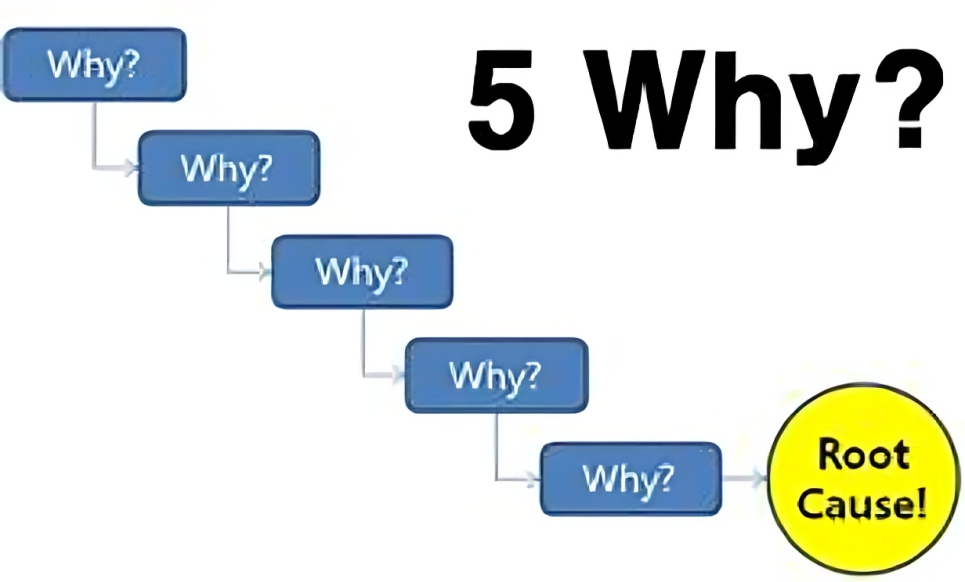The "5 Why's" technique: Crush your productivity problems
Dive into the "5 Whys" method to unravel the core issues hindering your productivity. Discover actionable solutions for lasting improvements.
Are you feeling overwhelmed by productivity roadblocks, constantly grappling with the same issues without finding lasting solutions? It's a common struggle in today's fast-paced world. But fear not, because there's a simple yet powerful way to help you cut through the clutter and get to the heart of your productivity challenges: the "5 Whys" technique.
In this article, we'll delve into this age-old problem-solving method, born from the depths of Japan's renowned factory system.
Unlike complicated productivity hacks or quick-fix solutions, the 5 Whys approach takes a refreshingly straightforward approach, inviting you to ask "Why?" not once, not twice, but five times.
It's a journey of discovery, guiding you through layers of inquiry to uncover the true root causes of your productivity woes. So, grab a cup of coffee, settle in, and let's explore how the 5 Whys can transform the way you tackle productivity problems.
Understanding the "Five Whys"
The "Five Whys" technique is a problem-solving methodology that originated in Japan and is often associated with the Toyota Production System. It involves asking "Why?" repeatedly, typically five times, to drill down to the root cause of a problem. By asking "Why?" multiple times, you can uncover deeper layers of causality behind an issue and identify the fundamental reasons for its occurrence.
How to use Five Whys?
To use the Five Whys technique for productivity problem-solving, follow these steps:
Identify the problem
Clearly define the problem you're facing. This could be a recurring issue, a sudden disruption, or any other challenge that needs addressing.
Ask "Why?"
Start by asking why the problem occurred. Phrase your question in a way that seeks a specific and factual answer. Avoid placing blame at this stage.
Dig deeper
For each answer you receive, ask "Why?" again. Continue asking "Why?" about the previous answer until you reach a point where further questioning doesn't provide meaningful insight.
Analyse the root cause
Once you've asked "Why?" multiple times and reached what seems to be the root cause, analyse it to ensure it's truly the underlying issue and not just a symptom.
Implement solutions
Once you've identified the root cause, brainstorm and implement solutions to address it. These solutions should target the root cause directly, rather than just treating the symptoms.
Monitor and evaluate
After implementing solutions, monitor the situation to see if the problem persists or improves. Evaluate the effectiveness of your solutions and adjust as necessary.
Prevent recurrence
Take steps to prevent the problem from occurring again. This might involve implementing new procedures, training, or making structural changes
Remember that the effectiveness of the "Five Whys" technique relies on asking open-ended questions, actively listening to responses, and maintaining a focus on uncovering the true root cause of the problem.
Benefits of using the Five Why Technique
Here are five key benefits of using the Five Whys technique for productivity problem-solving:
Identifying root causes
By asking "Why?" repeatedly, the Five Whys technique helps uncover the underlying root cause of a problem. This allows teams to address issues at their source rather than merely treating symptoms, leading to more effective and sustainable solutions.
Encouraging critical thinking
The process of asking successive "Why?" questions encourages critical thinking and deeper analysis of problems. It helps teams move beyond surface-level assumptions and explore the interconnected factors contributing to an issue.
Facilitating continuous improvement
By systematically analysing problems and their root causes, the Five Whys technique fosters a culture of continuous improvement within organisations. It encourages teams to learn from past mistakes, implement corrective actions, and prevent similar issues from recurring.
Promoting collaboration
The Five Whys technique is typically performed in a team setting, encouraging collaboration and shared problem-solving. By involving multiple perspectives and expertise, teams can generate more comprehensive insights and develop more robust solutions.
Cost and time efficiency
By pinpointing the root cause of a problem early in the problem-solving process, the Five Whys technique can save time and resources that might otherwise be wasted on ineffective solutions or addressing symptoms. This can lead to cost savings and improved operational efficiency for organisations.






